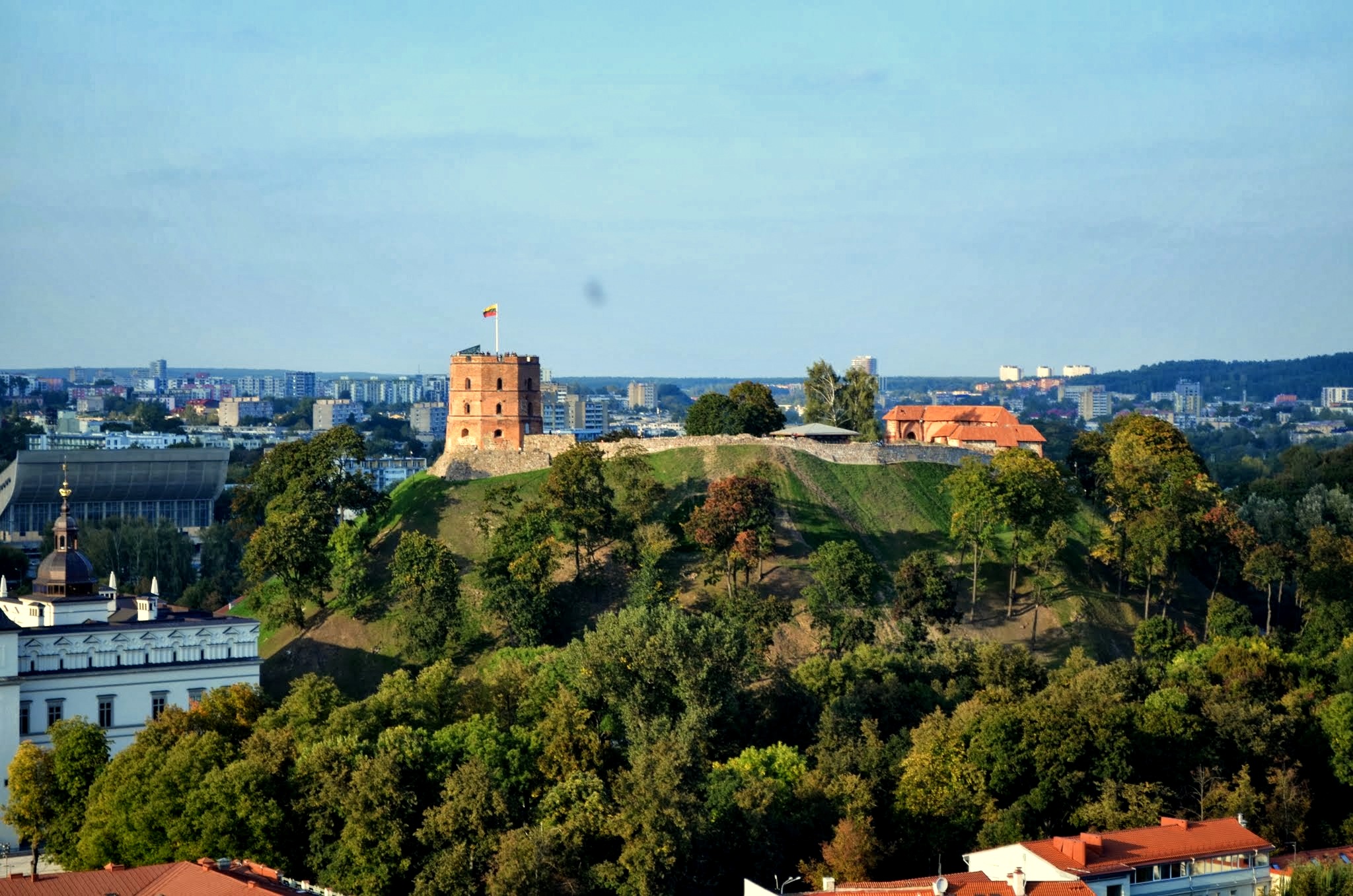 Gedimino Hill bursts out of the historic center of Vilnius. It is capped by a rebuilt medieval tower that recalls the castle that once stood there, the seat of medieval dukes. It was here that the Baltic Way, a chain of peaceful people linking hands and protesting Soviet rule, originated in 1989. That chain stretched almost 370 miles through Lithuania, Latvia, and Estonia, countries grouped culturally, geographically, and historically. A black-and-white video loop shown in the tower reveals the faces of people who shared a common hope and carried it like the candles they lit as part of their plea for independence.
Gedimino Hill bursts out of the historic center of Vilnius. It is capped by a rebuilt medieval tower that recalls the castle that once stood there, the seat of medieval dukes. It was here that the Baltic Way, a chain of peaceful people linking hands and protesting Soviet rule, originated in 1989. That chain stretched almost 370 miles through Lithuania, Latvia, and Estonia, countries grouped culturally, geographically, and historically. A black-and-white video loop shown in the tower reveals the faces of people who shared a common hope and carried it like the candles they lit as part of their plea for independence.
When I traveled to Vilnius, Gedimino Hill beckoned on my first day in the city. A cobbled path curls around it to its apex from its entrance from the park at its base. I ascended the hill, step by cobbled step, stopping to admire the view: the three white crosses shining on their wooded hill, the Neris River at its stately crawl, and the old town spreading out like a gift with its university bell tower, churches of eastern denominations, and former palaces in Baroque and Neoclassical style.
It’s not always easy to imagine yourself in the position of those who came before you. But Gedimino Hill elicits feelings of what it symbolizes. The village is the heartbeat of Lithuania, and surrounding its tower rambles the country’s biggest village. Its people strive and struggle, love and learn under the confluence of their own culture and the bureaucratic and political dross left over from Soviet rule, which ended in 1991. As a result, getting to the essence of the Lithuanian soul can mean looking backward, then farther backward to when Gediminas built his castle on the hill and before, to when the Lithuanians were tribes clinging to their pagan ways as Christianity made a swathe through Europe. The people of Lithuania do not recognize their complexity—to them, it is normal to be both pagan and Christian, both villager and city dweller. But they are fiercely proud of their folk traditions and ancient, slow-changing language, as well as their independence from oppressive forces that attempted to wrest from them their identity.
Vilnius is not one of Europe’s tourist centers. Riga, Latvia’s crowning city, unabashedly attracts bachelor and bachelorette parties from the United Kingdom; Tallinn’s marketing is as savvy as its technology, and tourists take to the Estonian capital willingly. Vilnius is neither party central nor cutting edge. It is a humble place, a place for reflection, a place for private celebration. Gedimino Hill, though it is, by right, one of the major attractions of the city, is a private-feeling place, one that is, at the same time, utterly accessible. It is free year-round and sometimes open 24 hours: it could not be either if it were in Riga or Tallinn.
I have ascended the hill in the summer, when the city sees the highest influx of outsiders. I have picked my way up the treacherous slope, slick with ice, during winter, when the wind at the top found its way into my sleeves and collar. I have ventured to the top at night, when the moon shimmered behind clouds and cast its light through autumn-golden birch leaves. Gedimino Hill is not just for tourists.
When in Vilnius, I visit Gedimino Hill when I need a new perspective on the city, on life, on myself. As must have been recognized by the Lithuanians who linked hands for the Baltic Way, this place is pregnant with the past as well as with possibility. We are like that when we travel, carrying our hope in a flame that connects us with those in our village, wherever that may be.
About the Author: Kerry Kubilius is a writer focusing on Eastern Europe.
Thank you for reading and commenting. Please enter our next Travel Writing competition and tell your story.
